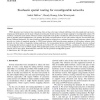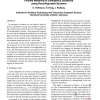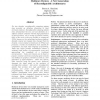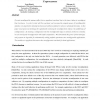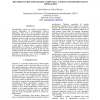100
click to vote
MAM
2006
15 years 14 days ago
2006
Reconfigurable systems can offer the high spatial parallelism and fine-grained, bit-level resource control traditionally associated with hardware implementations, along with the f...
104
Voted
MAM
2006
15 years 14 days ago
2006
FPGA placement and routing is time consuming, often serving as the major obstacle inhibiting a fast edit-compile-test loop in prototyping and development and the major obstacle pr...
108
Voted
ECEASST
2008
15 years 17 days ago
2008
In emergency scenarios we can obtain a more effective coordination among team members constituting a mobile ad hoc network (MANET) through the use of reconfigurable systems. This ...
89
Voted
DATE
2010
IEEE
15 years 21 days ago
2010
IEEE
—Due to increase in demand for reconfigurability in embedded systems, real-time task scheduling is challenged by non-negligible reconfiguration overheads. If such overheads are n...
103
Voted
ERSA
2008
15 years 1 months ago
2008
For two decades, reconfigurable computing systems have provided an attractive alternative to fixed hardware solutions. Reconfigurable computing systems have demonstrated the low c...
120
click to vote
FCCM
2004
IEEE
15 years 4 months ago
2004
IEEE
It is valuable to identify and catalog design patterns for reconfigurable computing. These design patterns are canonical solutions to common and recurring design challenges which ...
104
Voted
FPGA
1998
ACM
15 years 4 months ago
1998
ACM
Current reconfigurable systems suffer from a significant overhead due to the time it takes to reconfigure their hardware. In order to deal with this overhead, and increase the com...
108
click to vote
FCCM
2000
IEEE
15 years 5 months ago
2000
IEEE
Although run-time reconfigurable systems have been shown to achieve very high performance, the speedups over traditional microprocessor systems are limited by the cost of configur...
112
Voted
FPL
2009
Springer
15 years 5 months ago
2009
Springer
Reconfigurable systems are widely used nowadays to increase performance of computationally intensive applications. There exist a lot of synthesis tools that automatically generate...
105
Voted
FPL
2003
Springer
15 years 5 months ago
2003
Springer
By adapting to computations that are not so well supported by general-purpose processors, reconfigurable systems achieve significant increases in performance. Such computational sy...

